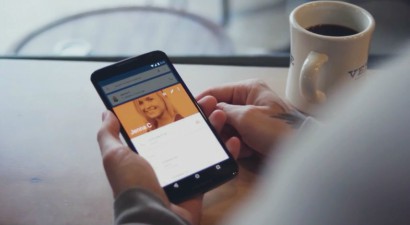Unless you were away from tech news recently, you know that Google put an end to years of rumors by announcing plans for the US launch of Project Pi — the new Google wireless data and voice service. Project Pi will initially include access to Sprint, T-Mobile, and wi-fi networks to let users make voice calls or use mobile data at low-cost rates.
 Similarly, Facebook just added a calling feature to its WhatsApp chat app, which boats 800 million users. And Facebook Messenger, which now has 600 million monthly active users, this week added free video calling in the US, Canada, UK and 15 other countries. Although Facebook just added voice over IP (VoIP) calling to Messenger a few weeks ago, the company says it’s already won ten percent of the global mobile VoIP calling market in that short time. What’s more, Facebook claims that Messenger with mobile VoIP can deliver higher quality voice than standard cellular calling.
Similarly, Facebook just added a calling feature to its WhatsApp chat app, which boats 800 million users. And Facebook Messenger, which now has 600 million monthly active users, this week added free video calling in the US, Canada, UK and 15 other countries. Although Facebook just added voice over IP (VoIP) calling to Messenger a few weeks ago, the company says it’s already won ten percent of the global mobile VoIP calling market in that short time. What’s more, Facebook claims that Messenger with mobile VoIP can deliver higher quality voice than standard cellular calling.
With giants like Google and Facebook/WhatsApp now directly competing with wireless carriers in the voice calling market, should carriers be worried? The short answer is yes.
Google wireless service offers what carriers don’t
Google calls its new Project Pi service the ‘network of networks’, and it is competitive with carriers in many ways. Although the service not necessarily cheaper than plans from some traditional US carriers, it offers some potentially killer features they don’t.
For one, Project Pi users don’t need to rely on just one network for voice quality, because the service will automatically connect to Sprint, T-Mobile or wi-fi — whichever is the most reliable network wherever the user is at a given time. The Google service will automatically encrypt wi-fi calls on both public and private wi-fi networks.
 Secondly, Project Pi will store your phone number and your contacts in the cloud, so that you’ll be able to make and receive calls from any device with an Internet connection, including smart watches with built-in wi-fi. Google Voice already lets you do this, but to get your Google Voice calls or messages outside of a wi-fi zone, you still need a wireless carrier plan. By becoming your wireless carrier through Project Pi, Google now owns that link in the chain, too.
Secondly, Project Pi will store your phone number and your contacts in the cloud, so that you’ll be able to make and receive calls from any device with an Internet connection, including smart watches with built-in wi-fi. Google Voice already lets you do this, but to get your Google Voice calls or messages outside of a wi-fi zone, you still need a wireless carrier plan. By becoming your wireless carrier through Project Pi, Google now owns that link in the chain, too.
Lastly, Google claims its pricing is easier for consumers to understand. For $20 a month you get unlimited talk, text, Wi-Fi tethering, and international coverage in 120+ countries. If you want cellular data for surfing the web or streaming media, you’ll pay a flat $10 per GB while in the U.S. and abroad. You pay for the data you think you’ll need in advance and if you don’t use all of that data, Google credits your bill the next month for the amount you didn’t use.
Project Pi forces carriers to improve services
Google calls Project Fi just an experiment and so far it’s only available on Google’s Nexus 6 phone, but if it evolves and becomes popular, it should concern mobile carriers. Although Google is paying Sprint, T-Mobile, and possibly other carriers in the future to use their networks, these carriers will still lose revenue to Google from customers who switch to Project Pi.
“Carriers must waste no time…to offset these new threats,” says Emma Mohr-McClune, service director with telecoms analyst company Current Analysis Consumer Services. “In the months to come, smarter carriers will start shifting their traditional bundled voice, data and messaging propositions to a single, streamlined proposition of a single bucket of data for all application usage — voice, messaging, browsing and more.”
Such radical plan streamlining will expose carrier plan pricing to easier competitive attack, Mohr-McClune says, but it will also challenge carriers to increase their value added services and customer experience to keep their biggest spending subscribers from defecting to Google, Facebook, and other free or cheap wi-fi calling services.
And as the saying goes, “if you can’t beat ’em, join ’em” — so more carriers may decide to partner with Google, Facebook, and others who offer such services — in exchange for potentially valuable resources. These resources might be for example, more wi-fi hotspot partnerships to offer subscribers, or valuable information on user demographics or application and network usage trends.
For more details on the Project Pi Google wireless service, see Google’s blog post. You can read more about the recent announcements from Facebook and WhatsApp here and here.




